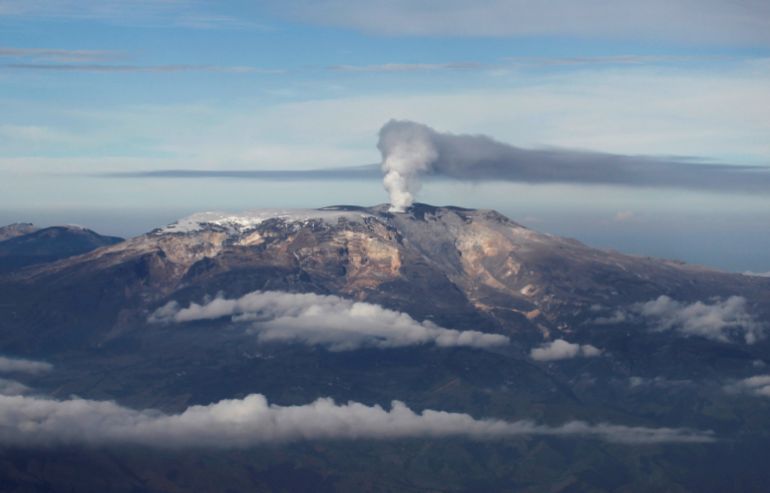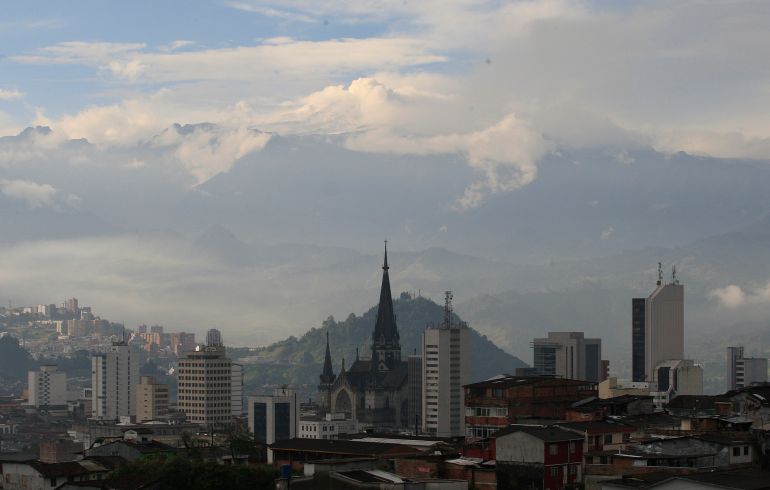Authorities in Colombia have warned of an increase in seismic activity around the Nevado del Ruiz volcano, a peak responsible for triggering the country’s largest recorded natural disaster, killing 25,000 people in 1985.
On Friday, President Gustavo Petro said the threat of an eruption had increased, amplifying a message the Colombian Geologic Service issued a day earlier.
“We have an orange alert due to the change in seismology at the Ruiz volcano,” Petro wrote on Twitter. “Mayors must prepare the protocols for this state of alert.”
An orange alert means that an eruption is likely in weeks or even days. Only one level is higher on the four-colour alert scale: red, which means an eruption is imminent or under way.
The Geologic Service issued a bulletin on Thursday announcing the heightened threat level, noting that its researchers had marked an increase in earthquakes, rock fracturing and released seismic energy.
The agency also urged surrounding communities to “remain calm but be attentive” to any developing news about the state of the volcano.

Since March 24, the Geologic Service has documented fracturing around the volcano’s southwest slope, reaching depths between two and four kilometres (1.2 to 2.5 miles) from its peak.
Earthquakes and tremors around the volcano also have been on the rise. The agency noted 6,500 earthquakes on March 28, then 11,000 on March 29, and 9,600 on March 30 by the time the bulletin was issued.
Most were relatively small, however, with the most powerful reaching a magnitude of 3.1 on the Richter scale.
But residents of the surrounding towns took to social media to share photos and videos of the peak, where ash could be seen billowing out.
The Nevado del Ruiz volcano, part of the Andes Mountains, is situated in the central part of Colombia, approximately 129km (80 miles) from the capital of Bogota.
It is part of a region commonly called the “Ring of Fire” — a belt of intense seismic activity that encircles the Pacific Ocean, from Chile to the US state of Alaska in the east, and from New Zealand to Russia in the west.

Covered in glaciers, with a one-kilometre-wide crater at its peak, the Nevado del Ruiz has been erupting as far back as 8,600 years, according to the Smithsonian Institution’s Global Volcanism Program.
The first eruption witnessed and recorded was in 1570, and the current eruption period started in 2014, the programme says on its website.
But its most famous eruption occurred on November 13, 1985, when the volcano spewed ash, gas and magma.
The US National Oceanic and Atmospheric Administration said the eruption pushed nearly 20 million cubic metres (706 million cubic feet) of ash and rock from its vents.
Melting snowcaps triggered violent lahars, debris flows composed of rock, water and other volcanic materials. Those lahars swept down the volcano’s slopes, entering nearby river valleys and striking towns including Armero, which was engulfed in mud and debris. Approximately 21,000 died in that community alone.
It was South America’s deadliest eruption and the fourth-largest death toll from a single eruption in history, according to the Global Volcanism Program.
Source : AlJazeera
















